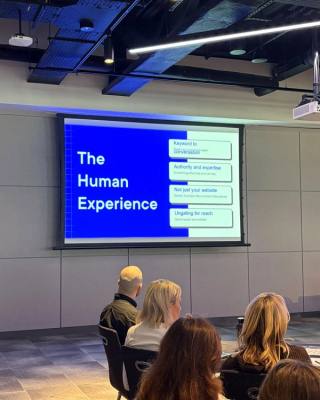Conversions are the heart of your business. But what exactly does a conversion mean to you specifically? Is it a sale? A lead? A new customer?
The answer isn’t always clear, and it can be hard to determine what metrics to use to measure success. In this article, I’ll go over how to decide what a conversion means to you, and how this can help enhance your digital presence.
First off, it’s important to understand that a conversion means different things to different businesses. For instance, a subscription based business might define a conversion as a new sign-up, while an e-commerce company might consider a conversion to be a completed purchase. And in the same vein, a B2B company might consider a conversion to be a booked appointment or demo request.
So, to determine what a conversion means to you, first consider what your overall business goals are. What are you trying to achieve? Are you looking to increase revenue, generate leads or build brand awareness? Once you have a good idea of your objectives, you can begin to define what a conversion means in the context of your business.
Let’s take a look at some examples of how well-known companies have identified what a conversion means to them and how it has helped them to progress as an organisation.
Take Netflix, for instance. The very best brands usually have a conversion rate of 30%-- Netflix has an exceptional 93%. Until 2020, Netflix defined their conversion as a free trial sign-up, and if you take a look at Netflix’s investments before then, you can see how they most likely defined their conversion and then worked backwards. The streaming service invested 1,045 million on average on marketing efforts, including SEO, social media marketing, email marketing and video marketing. The emphasis Netflix placed on their marketing efforts was a strategic funnel towards their free trial conversion.

Netflix Free Trial Landing Page
The second highest operation Netflix invests in is the technology and development of their platform. Every year, the brand pours millions into virtual reality content, platform optimization & personalization and machine learning to enhance user experience. The sophistication of the platform then converted free trial members to paying customers. The identification of a free trial conversion was key to their business model, and the investment paid off. Netflix now has $16.6 billion annual revenue.
Next, let’s have a look at Nike and Adidas. Not only do they compete against each other, but they now both consider Amazon to be a major competitor. All three brands define a conversion as a purchase; and the disadvantage for both Nike and Adidas is that Amazon’s conversion rate for Nike and Adidas products is higher than the conversion rates for both shoe brands’ own websites. Meaning, Amazon is more likely to sell a Nike or Adidas product than Nike and Adidas are likely to sell their own product online.
But research suggests that in the context of Amazon’s pull, Adidas is able to retain and convert more users on their own site than Nike. So, if Adidas and Nike both consider a purchase to be a successful conversion, how is Adidas able to uphold a better conversion rate over Nike? What is Adidas doing differently?
The answer comes down to each brands’ investments. While Nike is known for its efforts in brand recognition, Adidas has been investing heavily in its digital presence and marketing efforts. Specifically, Adidas carefully curates their product line, and promotes event releases of new items that are exclusively available at Adidas.com. That way, Adidas product buzz drives users directly to their owned property rather than Amazon.

Adidas and Bad Bunny partnership with Forum Lows sold exclusively on Adidas website and app
Nike is known as a champion of ads and brand promotion. But brand awareness also feeds traffic to third-party retailers like Amazon. Adidas understands that while brand awareness benefits both Adidas and Amazon, digital marketing and a strong web presence benefit only Adidas and its conversion rate. To understand a conversion is to outline your unique path to success, despite the pressure from competitors.
By looking at well known examples, you can see that identifying conversions goes hand-in-hand with aligning marketing efforts to business goals. Once you’ve defined your conversions, you can then focus on enhancing your digital presence, such as your website, to optimise for these goals you’ve laid out. Then, the conversions and revenue will follow.









